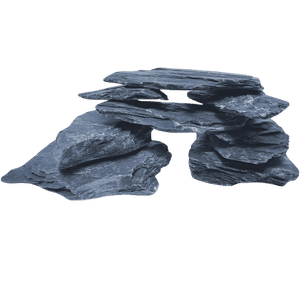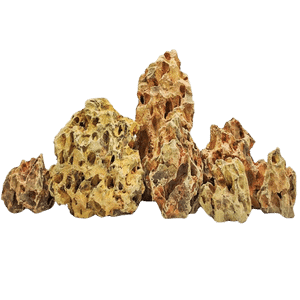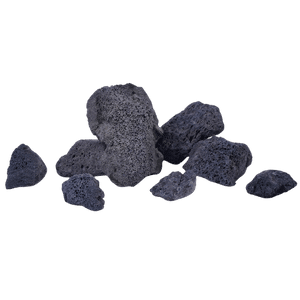Aquarium Rocks for Betta Fish Tank
Setting up a Betta fish aquarium is more than just selecting your vibrant little swimmer, it involves creating a well-balanced, attractive, and healthy ecosystem, Aquarium rocks are key players in constructing such an environment.
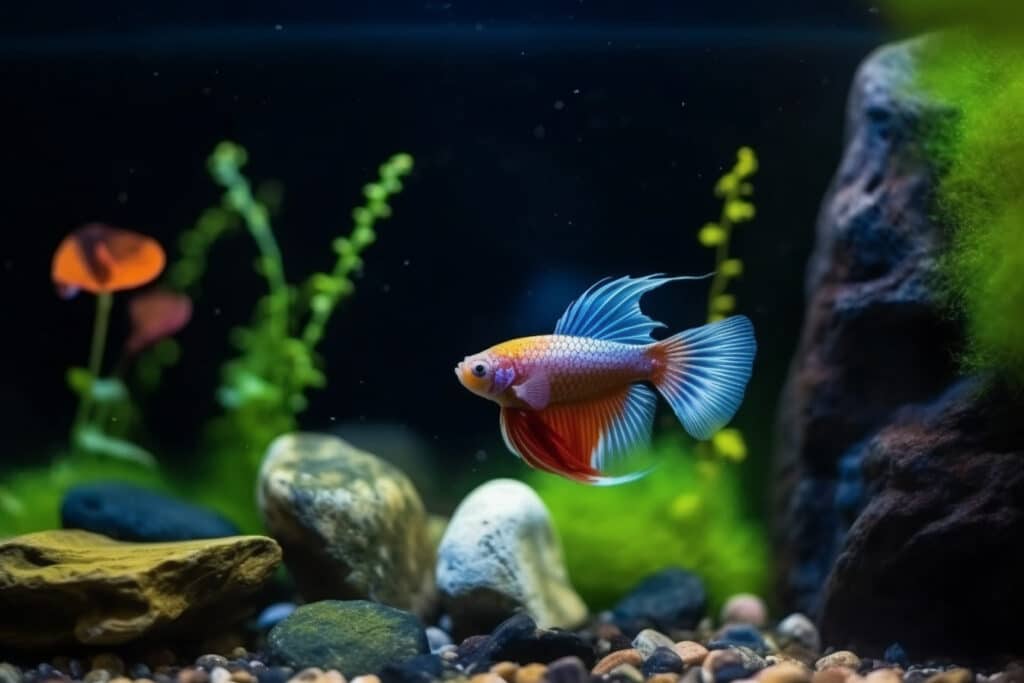
Aquarium rocks not only boost the aesthetic appeal of your tank by adding depth and an authentic touch but also fulfill vital functional roles in your little underwater realm.
Whether they’re creating hiding spots for your curious Betta, acting as a foundation for beneficial bacteria, or serving as anchoring points for aquatic plants, the significance of picking the right aquarium rocks is paramount.
Come with us on a journey into the captivating world of aquarium rocks, In this insightful blog post, we’re going to plunge into the heart of this rocky matter – right from understanding why aquarium rocks are non-negotiable to the factors to keep in mind while shopping for them.
We’ll navigate the rocky waters of key considerations to avoid, unveil the ideal stone types for a content Betta, and explore the types that are best shunned. The journey doesn’t stop there. We’ll also guide you through the process of introducing rocks into your Betta’s aquatic home, maintaining them, and finally, satiate your curiosity by answering the most frequently asked questions on this subject.
Join us as we embark on this exciting rocky ride, ensuring your Betta swims into a healthier, happier, and more beautiful home.
Table of Contents 🦑
A Quick Heads-Up… If you come across links on this page that take you to products on Amazon Associate or other partner stores, they’re affiliate links. This means if you decide to make a purchase, BettaReef earns a commission, but at no extra cost to you.
Why Aquarium Rocks Matter
Aquarium rocks play a vital role in the environment of your Betta tank. These aesthetic elements transform a regular tank into a picturesque aquatic world, but their significance goes beyond just enhancing beauty.
They are instrumental in mimicking the natural habitat of Betta fish. In their wild habitats, Bettas use stones and other similar structures for shelter and spawning nests. The stones in your aquarium can emulate these environments, offering your Betta essential hiding spots.
Moreover, rocks are crucial in maintaining water quality. some types act as a base for beneficial bacteria, playing an active role in breaking down waste and supporting the nitrogen cycle, an essential process for maintaining a healthy aquatic environment.
However, it’s crucial to understand that not all of them are appropriate for a Betta fish tank. Some can influence water parameters, modifying factors like pH levels and hardness. Therefore, selecting suitable rock types that align with your Betta fish’s specific needs is critical.
Safety
Safety is the primary concern when choosing aquarium decorations and rocks. Betta fish have delicate fins that can easily be torn by sharp or rough surfaces. Therefore, you should choose smooth materials.
Water Chemistry
Be aware of the potential for physical or chemical changes that some rock types can cause in water parameters. Some of them can alter pH or hardness, which may be detrimental to your betta fish.
One simple method to test if a rock is safe for your aquatic environment involves using white vinegar. Pour some vinegar on the rock, if it fizzes, the rock could alter your tank’s pH and should be avoided.
Rock Size
The size of the rocks you choose should be proportionate to the size of the tank and to your betta. Avoid small rocks or pebbles that your pet fish might accidentally swallow. and also large rocks can limit swimming space and make the tank feel cramped, so ensure they are appropriately sized.
Aesthetics
Rocks play a significant role in the visual appeal of your tank. Choose the one that complements the other decorations and the overall theme of your tank.
Cleaning
stones with many nooks and crannies can be harder to clean than smoother, simpler stones. Since maintaining clean tank conditions is crucial for your Betta’s health, consider how easy it will be to clean them.
Avoid painted or Dyed Rocks
Painted or dyed rocks may look attractive but could leach harmful chemicals into the water. Always opt for natural, untreated rocks.
Avoid metallic Rocks
Some rocks contain metal deposits, which can leach into the water and harm your Betta. If a stone has a metallic appearance or leaves a streak when scraped against a rough surface, it’s best to avoid it.
Remember, before introducing any new rock or decoration into your tank, it’s essential to clean them thoroughly. Rinse them under warm running water and scrub them with a brush to remove any dirt or loose particles. This will help prevent any unwanted substances from getting into your tank and affecting its inhabitants.
When in doubt, it’s always best to choose rocks specifically designed and sold for use in aquariums. These have been treated and tested to ensure they’re safe for your aquatic pets.
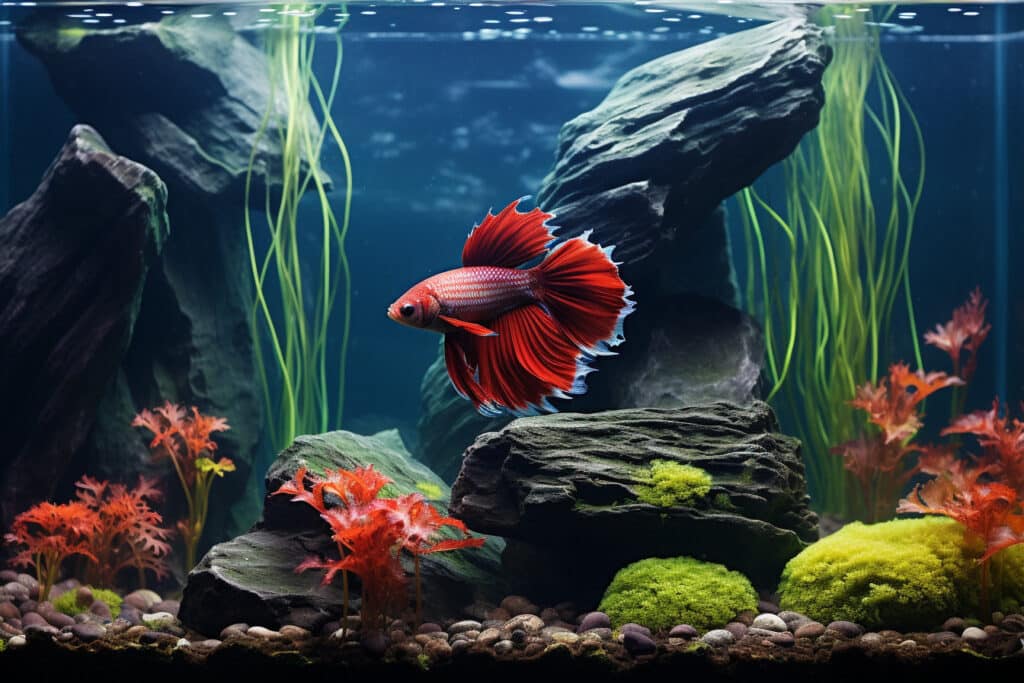
7 Ideal Rock Types for a Healthy Betta Fish Aquarium
Many rocks might look cool and attractive, however, there are only several who actually suitable for a betta fish tank
Here’s a list of safe stone types for Betta fish:
Slate.
Quartz.
Dragon Stone.
Lava Rock.
Petrified Wood.
Glass Stones.
Decorative Ceramic Rocks.
Slate
This rock type is flat, and smooth, and comes in a variety of sizes. Its smooth surface reduces the chances of causing any harm to your Betta.
100% natural Slate stone. Excellent for aquariums, aquascaping, and nano tanks.
Quartz
One of the main types of rocks you may consider for your betta fish tank is quartz, a metamorphic rock. These rocks have transformed due to heat and pressure, resulting in their unique appearance.
While metamorphic rocks, like quartzite, are largely inert and safe for most aquariums, others, like marble, may not be ideal for your Betta tank. Despite their visual appeal, they can alter water conditions by increasing the hardness and changing the pH levels, which may be unsuitable for Betta fish that prefer softer, slightly acidic environments.
For decorating fish tanks, maintaining clean water, and ensuring safety.
Dragon Stone
With its unique texture and structure, Dragon Stone offers intriguing areas for your Betta to explore. It’s also safe in terms of not altering the water balance.
Lava stone
Lava stone has a porous surface which is beneficial for beneficial bacteria colonization. However, ensure it is smooth and won’t tear your Betta’s fins!
Black lava is of volcanic origin and is rich in minerals and trace elements.
Petrified Wood
This stone type is safe for Betta fish and adds an attractive, natural look to the aquatic Environment.
Glass Stones
Although not a natural rock, glass stones are often used in Betta tanks. They are usually very smooth and come in a variety of colors.
Live Rocks
While typically used in saltwater tanks, “live rock”, has been colonized by beneficial bacteria and organisms, can also play a crucial role in freshwater tanks, including betta fish aquariums, in maintaining water quality.
Remember to always rinse and clean any rocks thoroughly before placing them into your aquarium. Also, conduct a vinegar or muriatic acid test to ensure the rocks won’t alter your aquarium’s pH.
Decorative Ceramic Rocks
Ceramic rocks designed specifically for aquatic environment use can also be safe for Betta tanks.
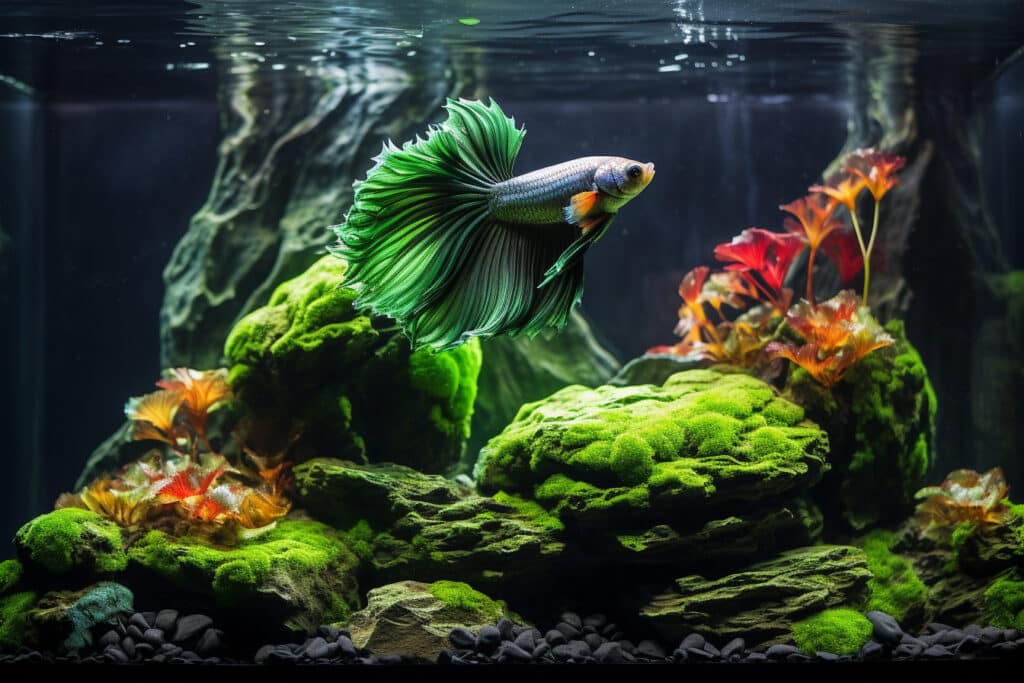
What To Consider When Buying Aquarium Rocks For Your Betta Fish Tank
Picking the perfect aquarium rocks for your Betta fish tank is an integral part of setting up a comfortable and healthy habitat for your aquatic companion.
Adding stuff for your aquarium isn’t just about what looks cool. You gotta think about it because everything you chuck in there affects your Betta buddy and the vibe of the whole Ecosystem. So, you gotta make choices that are good for your fish and keep the aquarium in top shape
Here are some of the key considerations to keep in mind when buying the right aquarium rocks and decorations for your betta fish tank:
Common Aquarium Rocks to Avoid for Your Betta Fish
If you’re the proud pet parent of a Betta fish, you know that creating a safe, comfortable, and visually pleasing environment for your little-finned friend is important.
Betta fish thrive in softer water, meaning the water’s general hardness should be on the lower side. Some rock types, like limestone or Texas holey rock, can cause hard water and should be avoided in a betta fish tank and caution is the name of the game.
Certain rock types can significantly alter the water chemistry, causing stress and potential harm to your betta. Let’s take a glance at some common aquarium stone types that you should steer clear of for your betta’s abode, and understand why they don’t make the cut.
Limestone
Limestone rocks can alter the pH and hardness of the water in your aquatic environment, making it more alkaline. Betta fish prefer slightly acidic to neutral pH levels.
Dolomite
Dolomite can also increase the pH and make hard water, which is not ideal for Betta fish.
Soapstone
Rocks containing metal, such as Hematite, can release harmful substances into the water, potentially poisoning your betta fish.
Metallic Rocks
Rocks containing metal, such as Hematite, can release harmful substances into the water, potentially poisoning your betta fish.
Seiryu Stone
Seiryu stones contain calcium carbonate which can increase the hardness and pH of the water, creating conditions that may be stressful for a Betta.
Geodes
Geodes may contain a variety of minerals that can leach into the water and affect the water’s chemistry. They are not recommended for a betta fish tank.
Texas Holey Rock
This rock, composed primarily of calcium carbonate, increases the pH and hardness of aquatic environment water, which is not suitable for bettas.
Any Rocks with Sharp Edges
Rocks with sharp edges can pose a risk to your Betta fish. Bettas have delicate fins that can be easily torn on sharp rocks.
Remember to clean any rock thoroughly before introducing it into your Betta fish tank, and when in doubt, opt for rocks specifically marketed for aquatic environment use.
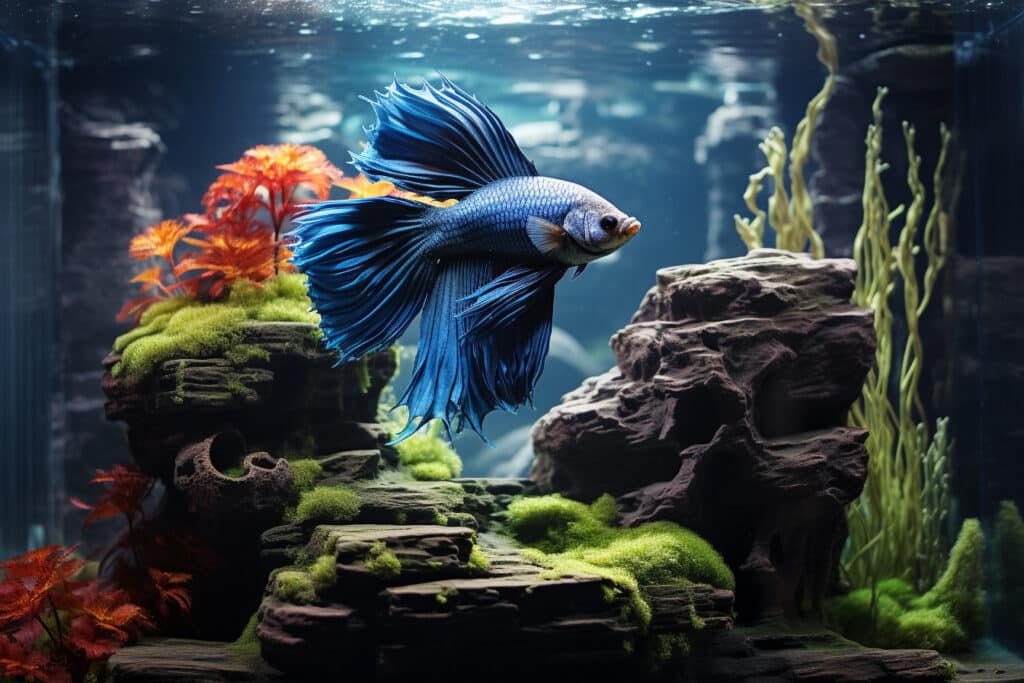
How to Introduce Rocks Into Your Betta Fish Aquarium
Now that you’ve selected the perfect rocks for your aquatic environment, it’s time to introduce them to your new home. But wait – it’s not as simple as just plopping them in. Here are a few important steps to follow:
Cleaning
All rocks must be thoroughly cleaned before being placed in your aquatic environment to remove any dirt, dust, or potentially harmful substances. One of the best ways to clean rocks is by rinsing them under running water and scrubbing them with a clean brush. Do not use soap or detergents, as these can harm your pall.
Testing
It’s important to test rocks for their impact on water parameters. You can do this by placing them in a bucket of water and testing the water’s pH before and after a few days. If the pH changes significantly, the rock is likely altering the water chemistry and may not be suitable for your underwater ecosystem.
Arranging
When arranging rocks in your tank, ensure they are stable and won’t topple over and harm your fish. It’s often beneficial to place them in ways that make hiding spots and areas of interest for him or her.
The art of arranging aquascaping rocks pleasingly can greatly enhance the aesthetic appeal of your betta fish tank, making it more than just a habitat, but a piece of living art.”
Monitoring
Once your rocks are in place, monitor your underwater ecosystem closely for a few days. Watch for changes in your bettas’s behavior and keep an eye on water parameters.
Introducing rocks into your aquatic environment is a significant step in creating a stimulating and natural environment for your aquatic friend. By taking the time to properly clean, test, and arrange your rocks, you can ensure they provide the most benefit to your aquatic ecosystem.
Care and Maintenance of Aquarium Rocks
Aquarium rocks, while seemingly sturdy and unchanging, also require care and attention to keep your underwater ecosystem healthy and visually appealing. Here’s what you need to know about the care and maintenance of aquarium rocks:
Algae Control
Over time, rocks can become coated with algae. While a small amount of algae can provide beneficial grazing for certain fish, excessive algae growth can become a problem. To control it, consider adding algae-eating creatures to your tank or manually scrubbing the rocks occasionally.
Cleaning During Water Changes
Use water changes as an opportunity to clean your rocks. This can be done by gently scrubbing them with an aquarium-safe brush.
Removing and Cleaning
In some cases, you might need to remove the rocks from your underwater ecosystem for a thorough cleaning. This should be done cautiously to minimize disturbance to your fish and the beneficial bacteria on them. Never use soap or chemicals, just hot use water and a scrub brush.
Monitoring for Changes
Keep an eye on your rocks for any noticeable changes, such as discoloration or unusual growth. These could indicate water quality issues that need addressing.
By maintaining your aquarium rocks, you’re helping ensure a healthy and vibrant environment for your fish. Remember, a well-cared-for aquarium is more than just beautiful, it’s a thriving habitat for your aquatic companions.
Conclusion
Aquarium rocks can dramatically enhance the environment for your betta, aesthetically and functionally. The right selection and placement of aquarium rocks can make your betta tank more than just a habitat – it can become a showpiece that closely mimics a betta’s natural environment. Remember, your Betta’s health and happiness are paramount.
Thanks for journeying with us into the world of Betta fish and aquarium rocks. We hope this information helps you create an inspiring home for your Betta. Happy aquascaping

Delighted to have you here at BettaReef! This place is a treasure trove of knowledge about Betta fish, Betta Care, Health, Gear, and much more from the wonders of aquatic life. My journey in this fascinating world began when I was just 8, and now, as a seasoned hobbyist, I’m here to help fellow Betta enthusiasts create a thriving Betta environment for a healthy life.
I’m committed to delivering high-quality content, backed by a stringent editorial process. Each product review is based on real-life usage and practical analysis, ensuring that you get insights and advice that truly matter.
Related Blog Posts:
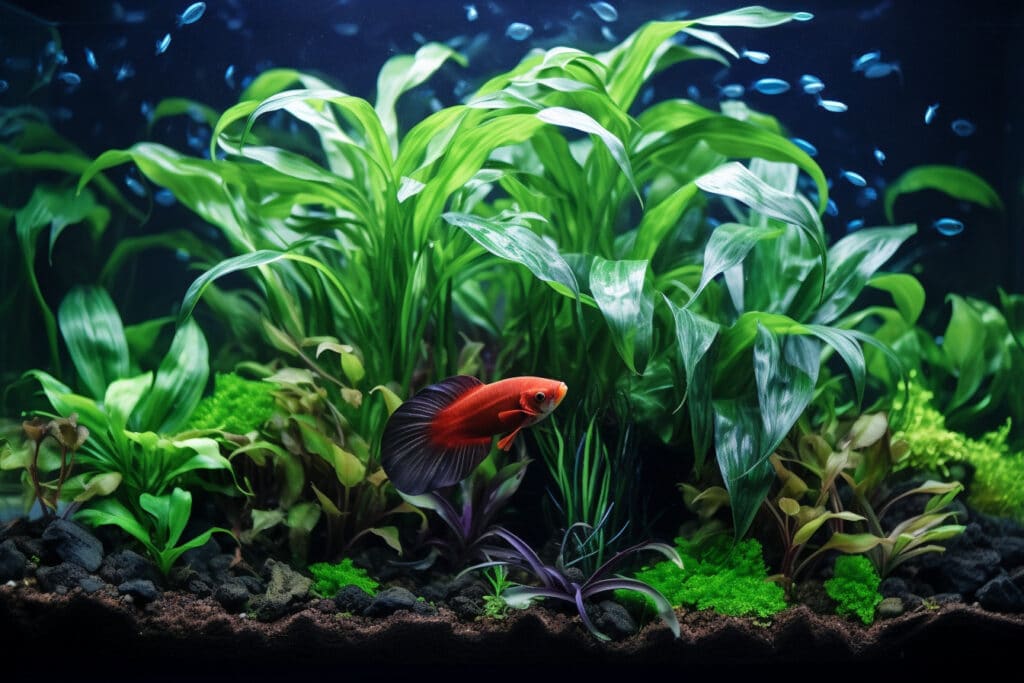
Best Anubias Plants For Betta Fish
Best Anubias Plants For Betta Fish Today, we’re diving deep into the world of Anubias
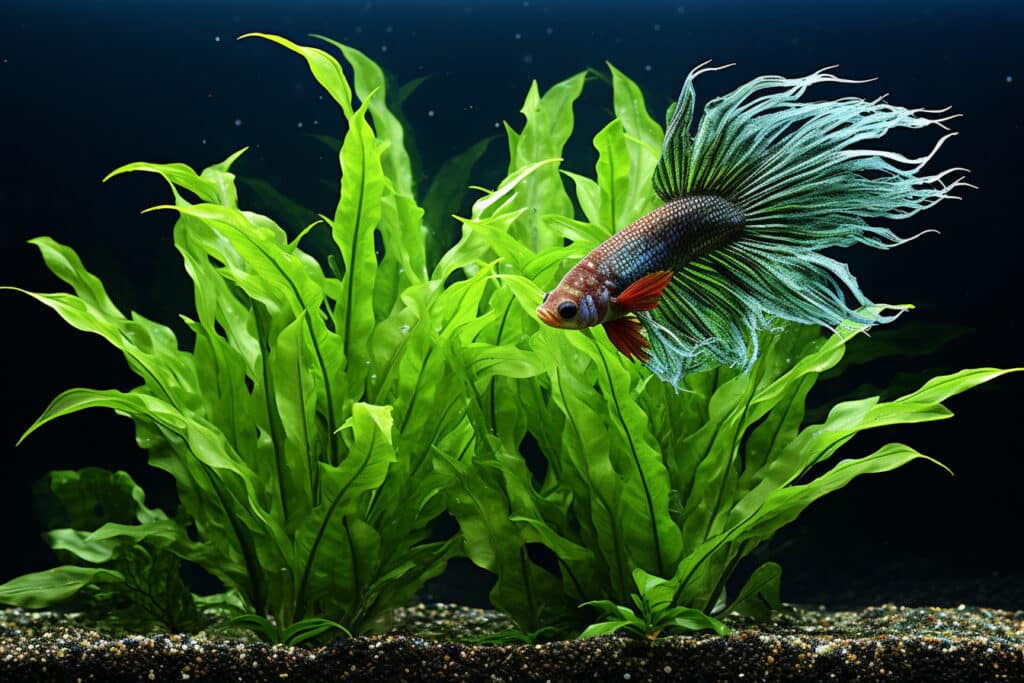
Java Fern The Green Oasis in Your Betta Fish Tank
Java Fern The Green Oasis in Your Betta Fish Tank Welcome to the green side
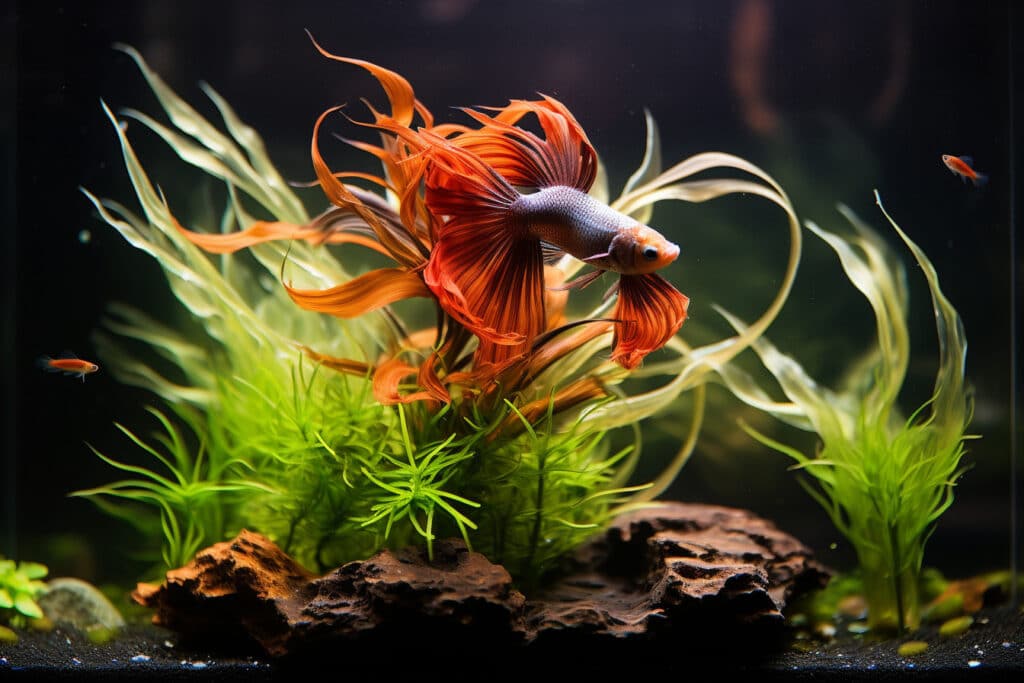
The Best Aquatic Plants For Betta Fish
Home The Best Aquatic Plants For Betta Fish Aquatic Plants for Betta Fish: Uncover the

